A natural swimming pond, often referred to as a natural pool or swimpond, is an innovative blending of nature and leisure, creating a harmonious natural water feature in your own garden. Unlike traditional pools with chlorine, these natural pools are designed to cleanse water through a biological filtration system, offering a chemical-free way to enjoy a swim.
They provide a unique and sustainable way to enjoy a refreshing dip on a hot day in the summer or a cold winter plunge to wake you up, while being surrounded by a more natural environment. However, the unpredictable UK climate often leads to a common question, “Can you heat a swimpond?”.
The simple answer is yes, however, there are many factors to consider before heating it.
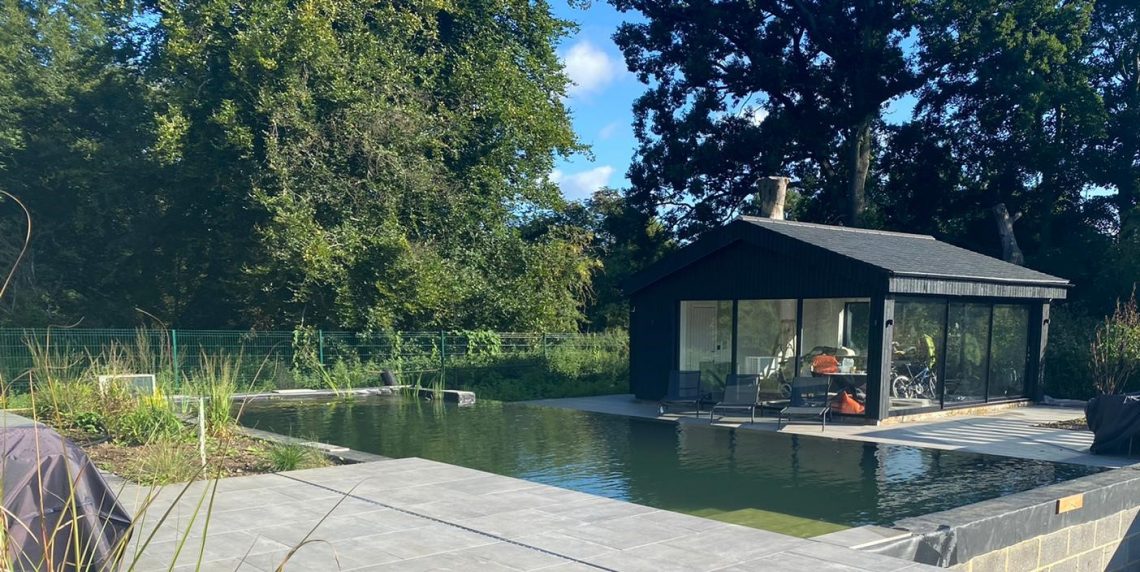
Key Takeaways
- Natural pools are a sustainable alternative for recreational swimming, integrating naturally filtered water with a living ecosystem.
- Heating a swimming pond is possible, but requires careful consideration of the ecosystem’s health and appropriate technology.
- Costs, maintenance, and the complexities of installing a heating system in a natural pool need to be thoughtfully evaluated.
Understanding Natural Swimming Ponds
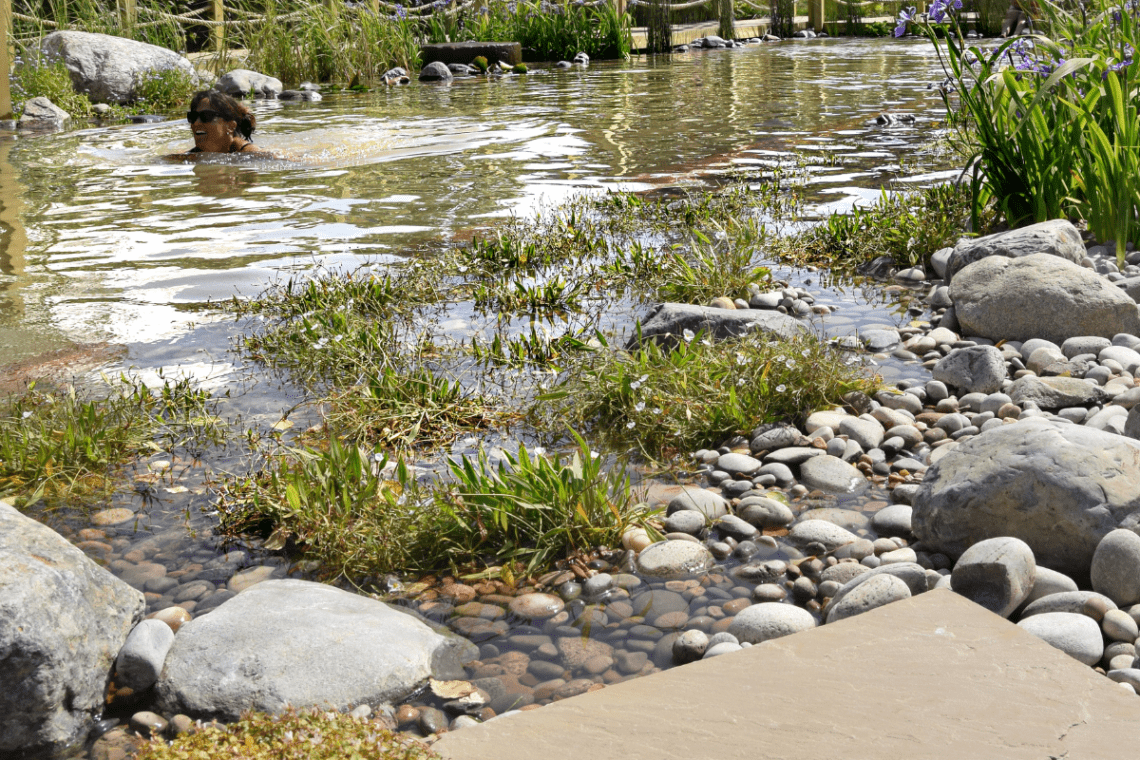
When considering a swimming pond for your garden, it’s essential to understand how it functions as an ecosystem and the advantages it offers compared to a conventional chlorinated pool.
Can You Heat a Natural Swimming Pool?
Yes, you can heat a natural swimming pond, but several factors must be considered to ensure the ecosystem remains balanced and sustainable. Here’s a structured overview of what you need to know about heating a natural swimming pond effectively and responsibly.
Concept and Ecosystem
A natural swimming pond works in harmony with nature, incorporating a variety of aquatic life, oxygenating plants, friendly bacteria, and sometimes other wildlife. Your pond will likely include water plants and be surrounded by trees and other greenery, creating a freshwater ecosystem that can purify the water naturally. These ponds are designed to be low in nutrients, limiting excessive algae growth and ensuring crystal clear water suitable for wild swimming.
Benefits Over Chlorinated Pools
Natural pools offer numerous benefits over traditional chlorinated swimming pools. They create a chemical free, living environment that supports a diverse range of aquatic life, contributing to your garden’s ecological balance.
The absence of harsh chemicals like those found in chlorinated water makes them more eco-friendly and less abrasive to skin and hair. Additionally, these ponds blend seamlessly with your garden landscape, providing an idyllic and therapeutic swimming experience that is hard to replicate with a conventional swimming pool.
Heating Options for Natural Swimming Pools
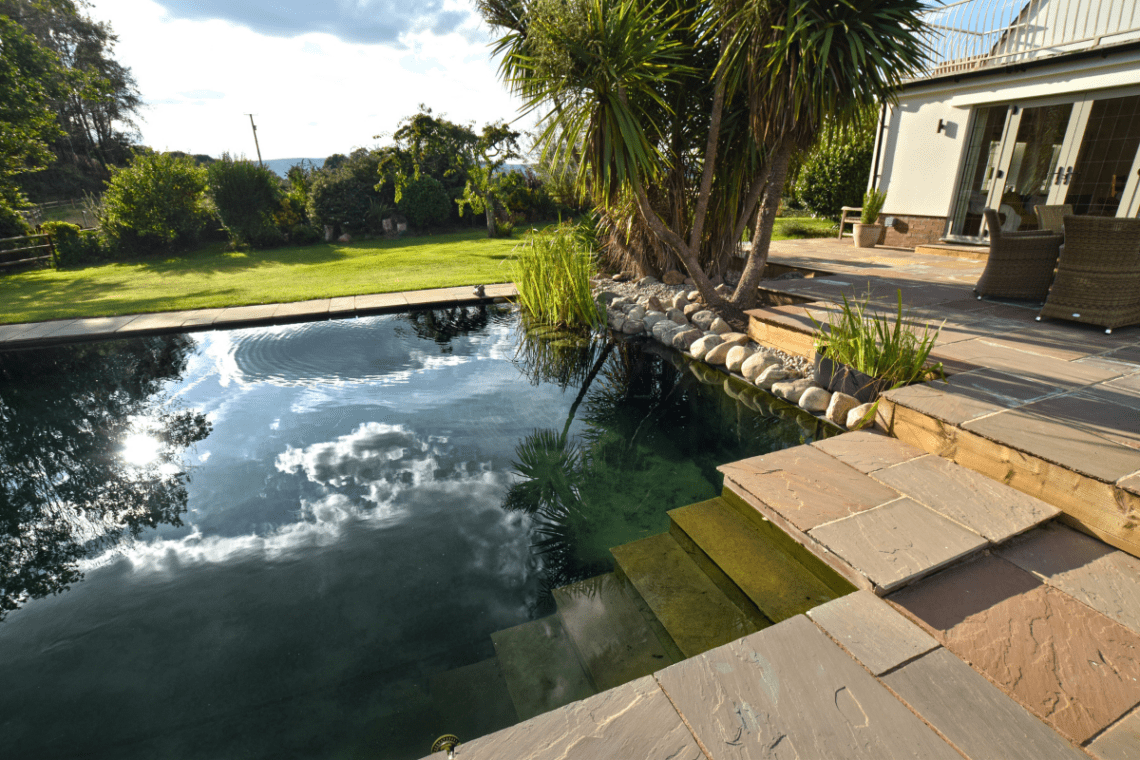
Traditional swimming pools are often heated, especially in the UK where the air temperature is generally lower than other countries worldwide. When people think of natural swimming pools, they often want to heat them just as you would with a conventional pool.
When considering heating a natural swimming pond, your choice of solution should balance effectiveness with environmental impact. Below are practical options for maintaining an inviting water temperature, ensuring your garden remains a haven for relaxation and wildlife throughout the year.
Types Of Natural Swimming Pool Heaters
Pool heaters look a bit like boilers and can run off oil, electricity or gas. Some modern systems will use air-source heat pumps to extract energy from the air.
One of the problems with heating a natural swimming pool is that the pool will lose heat just as soon as it gets up to the required temperature (usually 26–30°C).
- A super energy-efficient system (perhaps linked to a ground-source heat pump) with a solar cover. You can invest in a solar and debris blanket, which covers the pool to minimise heat losses.
- A clever option is to invest in renewables setup, which runs through a heat exchanger to heat the water. Using a solar thermal array means the pool will be heated well on the sunny days when you want to use the pool.
- Another option is to use biomass. You’ll need specialist advice for these more complex solutions, but the significant investment is usually well worth it.
Most of our customers opt for an air-source heat pump, due to the lower running costs for a 11m x 4m natural pool.
Costs and Financial Considerations
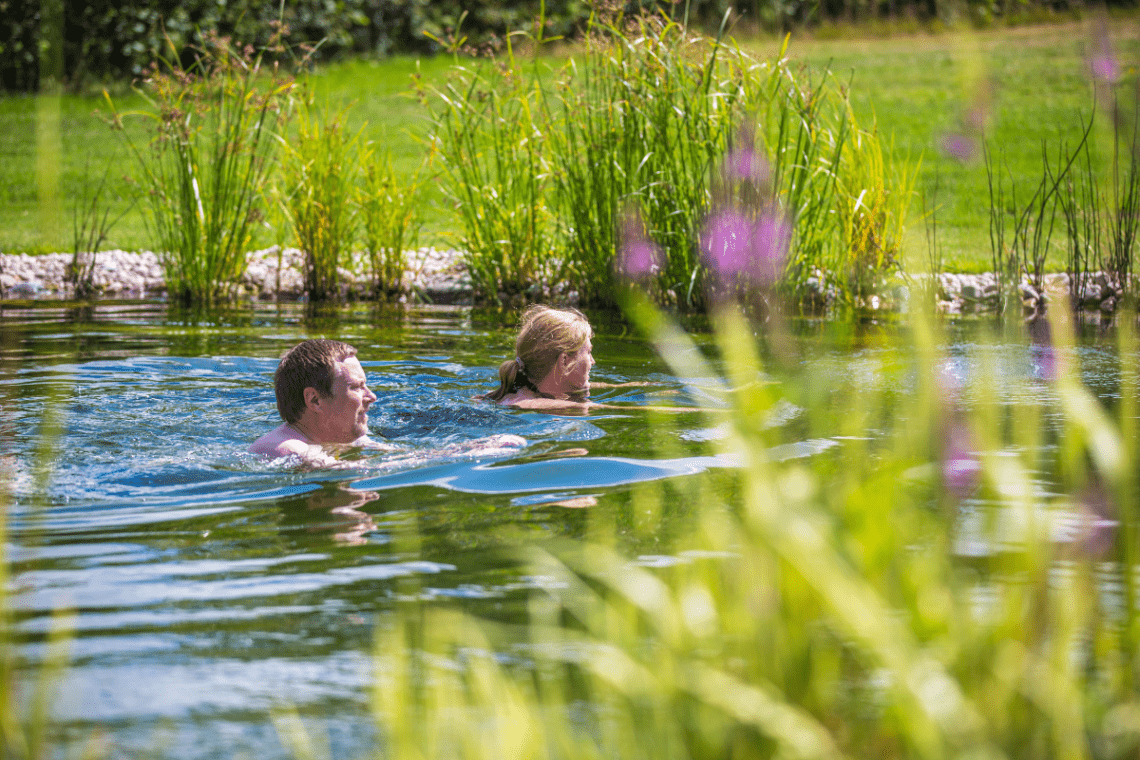
When considering heating a natural swimming pool, you must be aware of the initial financial outlay as well as the ongoing expenses. These costs can be a significant investment, so it’s essential to understand them thoroughly.
Initial Investment and Running Costs
The initial investment for installing a heating system for your natural swimming pool includes purchasing and fitting a heat pump or alternative heating solution. For a substantial body of water, this can be a sizable expenditure.
Costs may vary depending on the efficiency and capacity of the heat pump selected. In addition to the setup costs, running costs are a recurring expense. The operation of a heat pump or any chosen heating mechanism will impact your energy bills.
It’s important to note that swimming ponds typically require a significant amount of energy to maintain favourable temperatures, which can lead to higher ongoing expenses compared to a traditional pool. Calculating the cost per square metre can provide a more tailored estimate. Moreover, your choice of heating makes a difference; certain heat pumps are more efficient, albeit with higher initial costs.
Calculating the Payback Period
Determining the payback period is key to assess when the investment in heating your natural swimpond becomes financially viable. To calculate this, divide the initial costs of the heating system by the annual savings on your energy bill due to the increased efficiency of newer models.
While a more efficient system might have higher upfront costs, it can lead to greater savings in the long run, shortening the payback period. Remember that factors such as average outdoor temperatures and frequency of pond use will affect these calculations. It’s advisable to consult with professionals who can provide a detailed analysis based on your requirements.
Maintaining a Heated Natural Swimming Pond
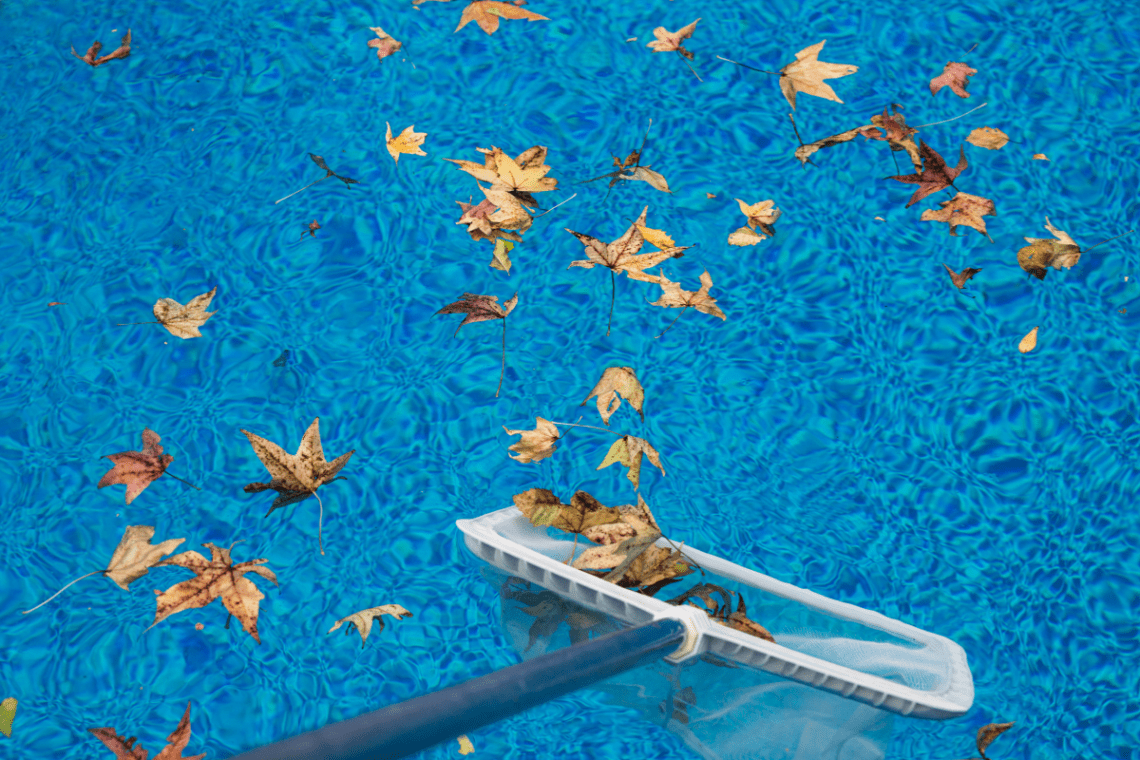
Creating an inviting and sustainable heated natural swimming pool requires regular attention and season-specific maintenance to preserve its balance and aesthetic appeal. Key elements include managing heat loss and ensuring efficient operation throughout varying conditions.
Regular Maintenance Routines
To minimise heat loss and maintain optimal temperatures in your swimming pond, incorporating a heat-retention strategy is essential. This involves regularly checking and repairing any insulating materials or covers to prevent unnecessary heat escape.
Maintenance of your pond’s surface is also crucial; make sure to clear away debris with a skimmer and prevent blockages that could affect heating efficiency. Increasing oxygen levels in the pond will aid in sustaining a healthy environment, which in turn helps to reduce algae growth. Use aeration devices and ensure proper circulation to keep the water quality high and heating costs low.
Have a look at our pond maintenance packages and let us do the hard work for you.
Winter Care and Algae Control
While heated ponds can remain functional during winter, special care must be taken to prevent ice formation that can damage pond liners and filtration systems. Remove fallen leaves regularly to avoid decay and nutrient overload, which can fuel algae growth.
Avoid using harsh chemicals to control algae; instead, promote plant and microbial life that competes with algae for nutrients, creating a living system for filtration. Garden design can also play a role in reducing algae, as shading certain areas of the pond can lower temperatures and inhibit its growth.
Transform Your Swimpond with Expert Installation and Professional Services
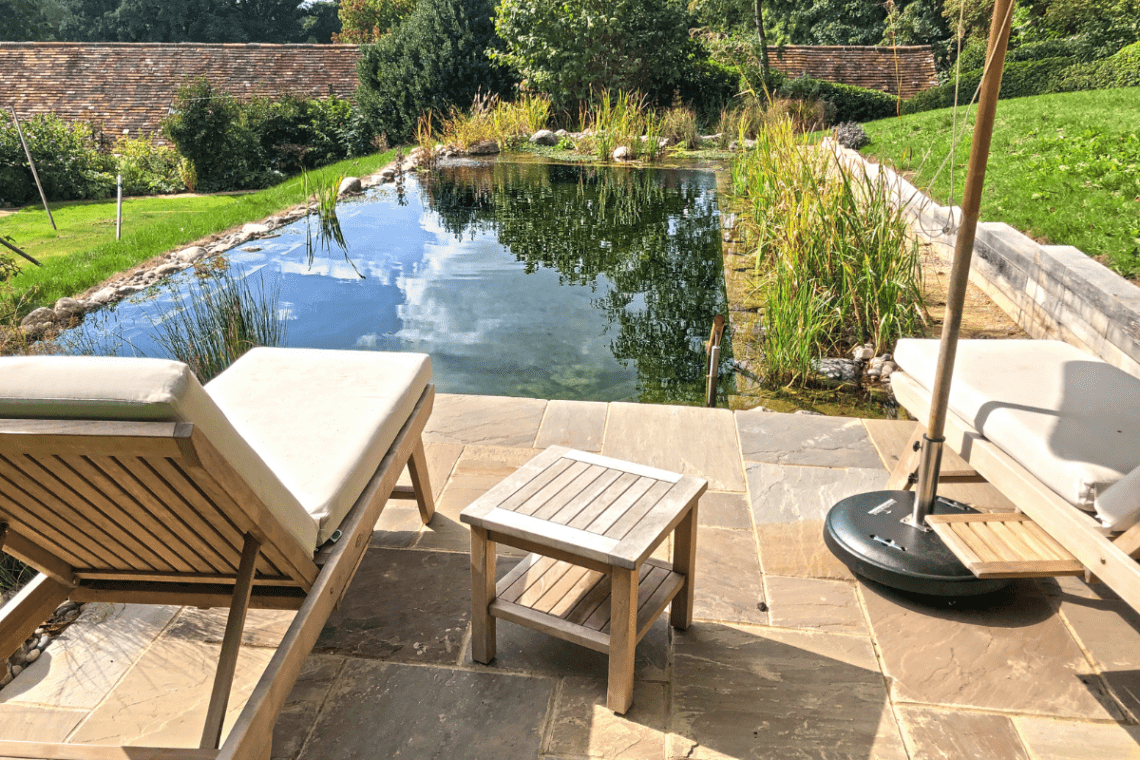
Starting the journey to heat your natural swimpond involves more than just enhancing comfort; it’s about ensuring the delicate balance of your pond’s ecosystem is maintained and optimised. The task needs not only professional guidance but also a meticulous approach to installation and ongoing maintenance.
At Ponds by Michael Wheat, we understand the complexities involved in integrating heating solutions into natural swimming pools. Our team of experts is dedicated to providing bespoke advice, ensuring that your installation meets the highest standards of functionality and environmental responsibility.
Ready to Upgrade Your Pond Experience?
Contact Ponds by Michael Wheat today and let us guide you through every step of the process. From initial consultation to detailed planning and professional installation, we’re here to ensure your natural swimming pool remains a cherished, functional feature of your back garden, all year round.
Frequently Asked Questions
1. What are the costs involved in installing a heating system for a swimming pond?
The cost to install a heating system in your swimming pond can vary widely. Expenses depend on the heating method, the size of the pond, and the climate. In the UK, the financial viability of such installations should be weighed against the hefty energy requirements.
2. Is it possible to maintain a warm temperature in a natural pool without using water plants?
Maintaining a warm temperature in a natural pool without the thermal benefits that water plants provide may increase your energy usage and costs. Natural pools generally rely on plant life to help with insulation and heating the water; foregoing this can affect the practicality and require more active heating solutions.
3. How do solar heating systems work for natural swimming ponds?
Solar heating systems use solar panels to capture energy from the sun, which is then converted into heat. This heat is transferred to the pond water through a network of pipes, gently raising the water’s temperature in an eco-friendly manner.
4. Are pumps necessary to circulate warm water in a natural swimming pool?
Circulation is key in maintaining consistent water temperatures. Therefore, using pumps is necessary to ensure warm water is evenly distributed throughout your natural swimming pool. Pumps prevent cold spots and contribute to the wellbeing of the ecosystem within your pond.
5. How can I ensure the heating system doesn’t harm the pond’s natural ecosystem?
Selecting a heating method that maintains a gentle, gradual increase in temperature is crucial. Additionally, integrating any heating system with the pond’s existing filtration and circulation can help preserve the natural balance and health of your pond’s ecosystem.